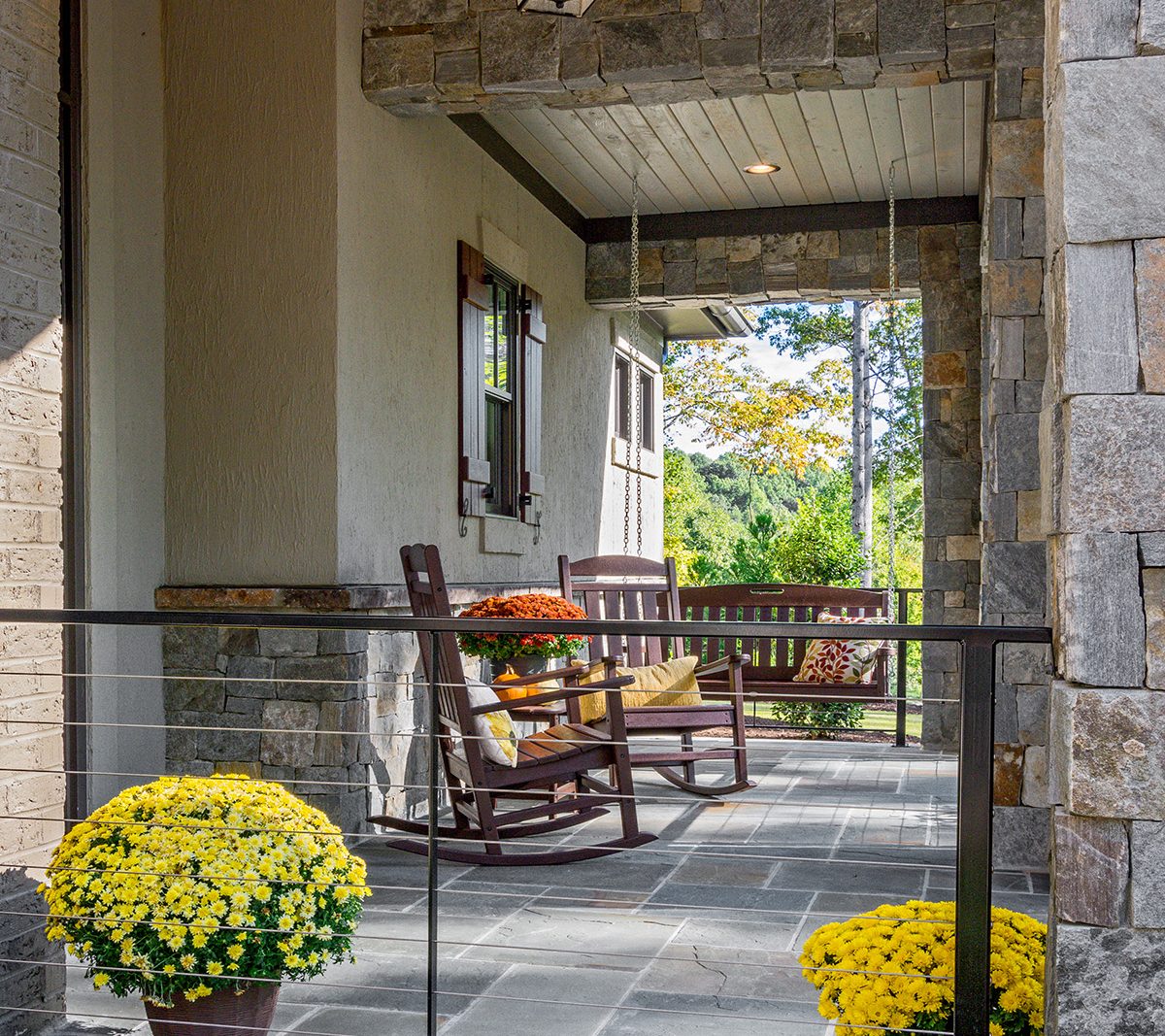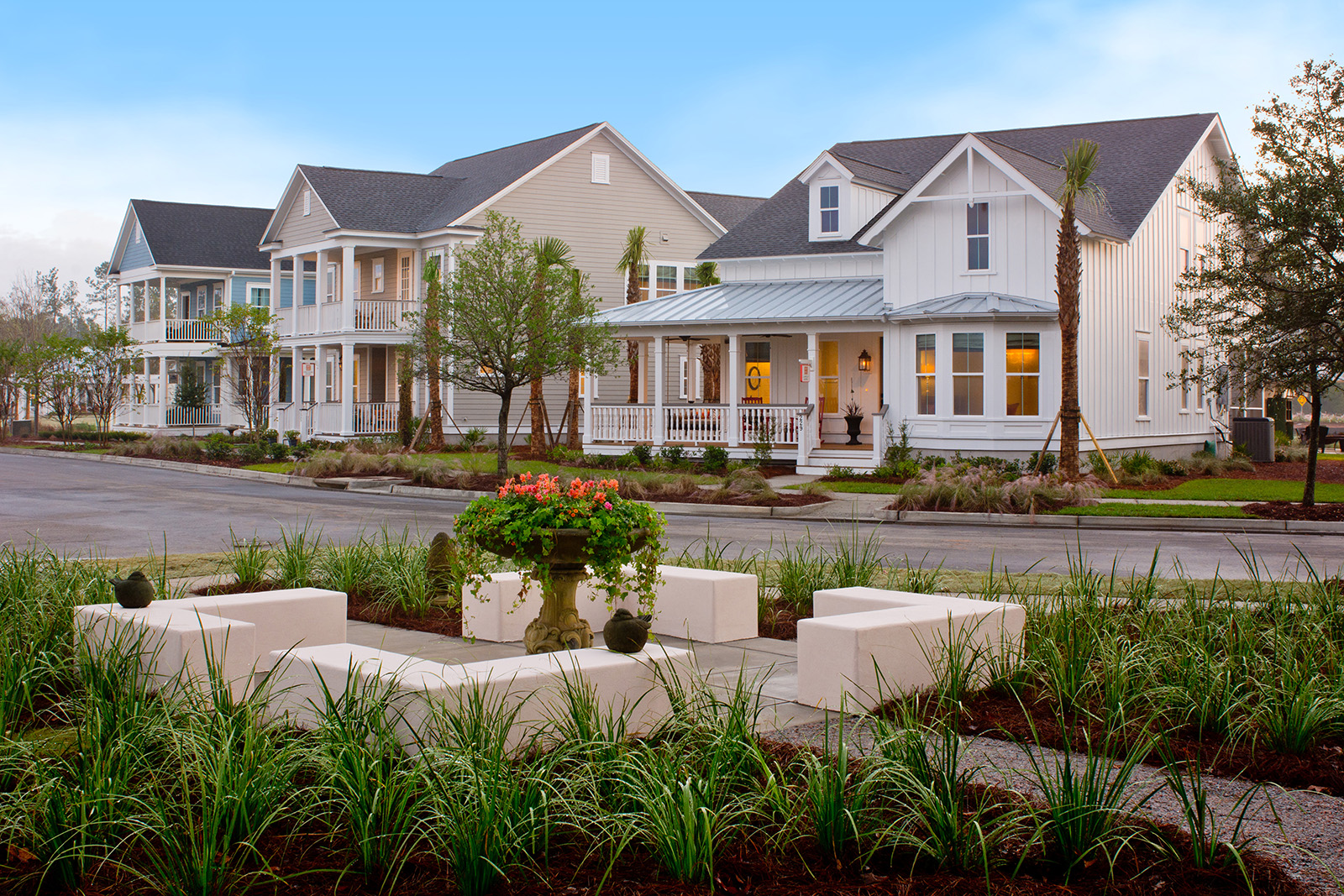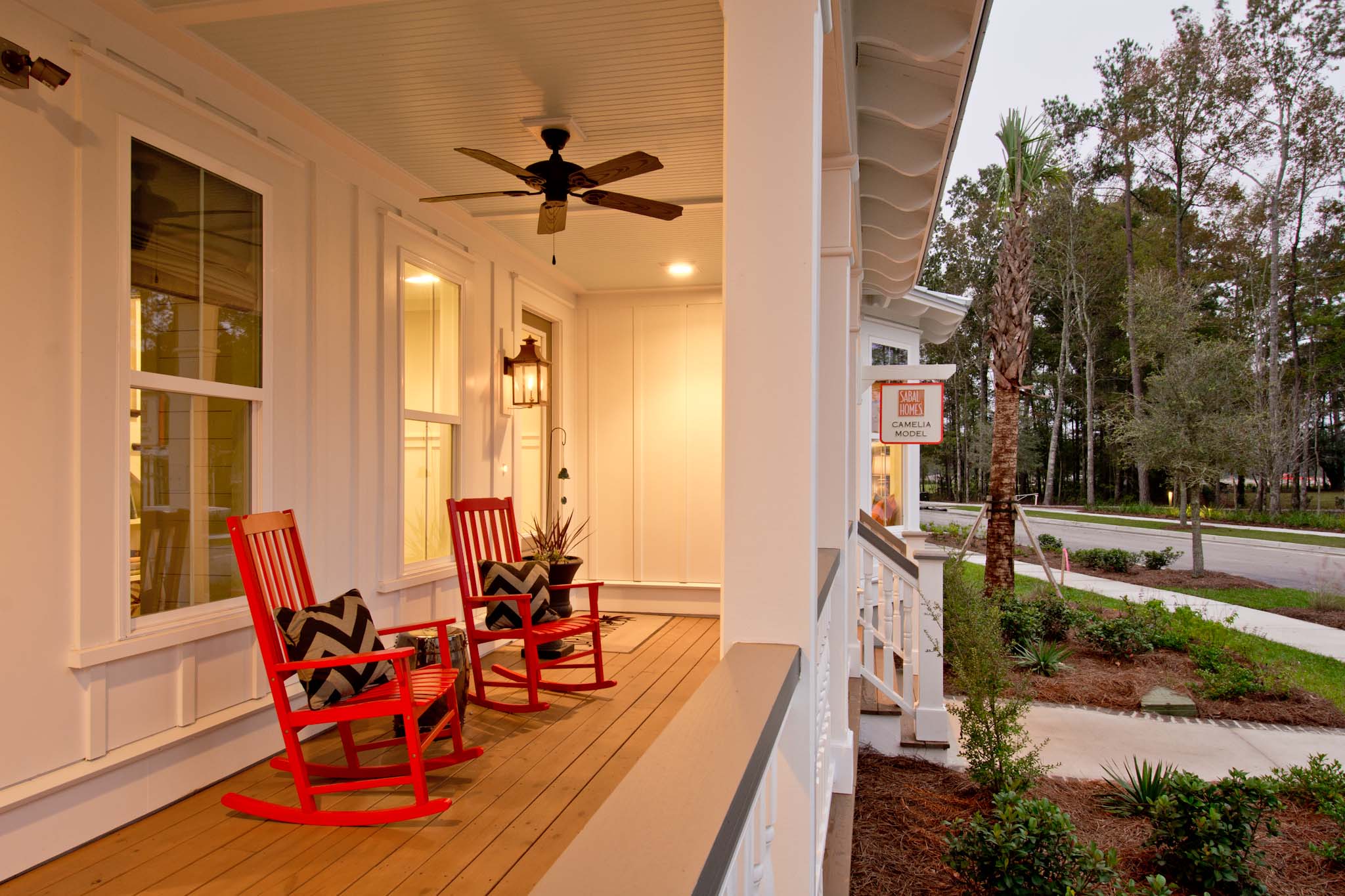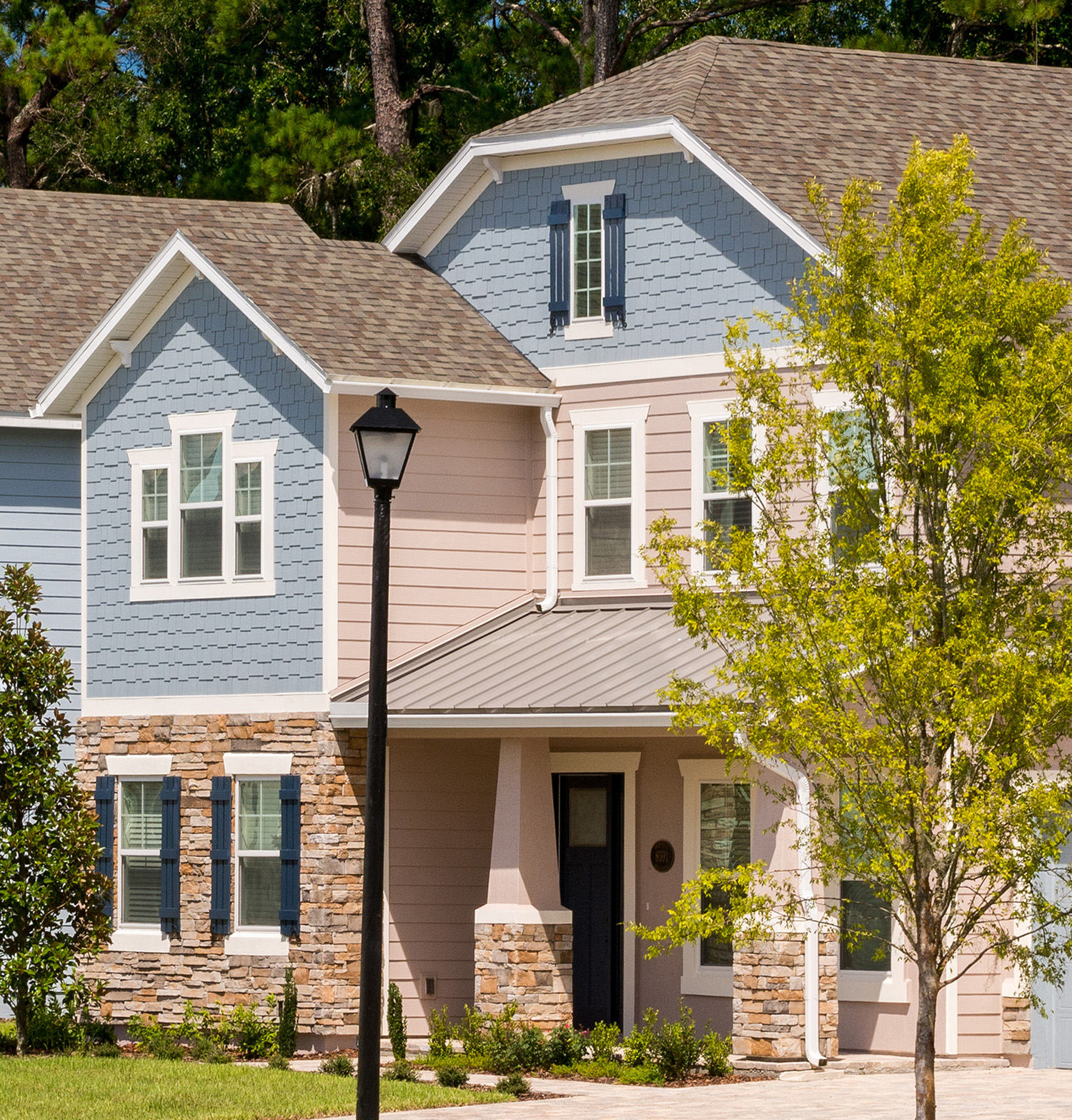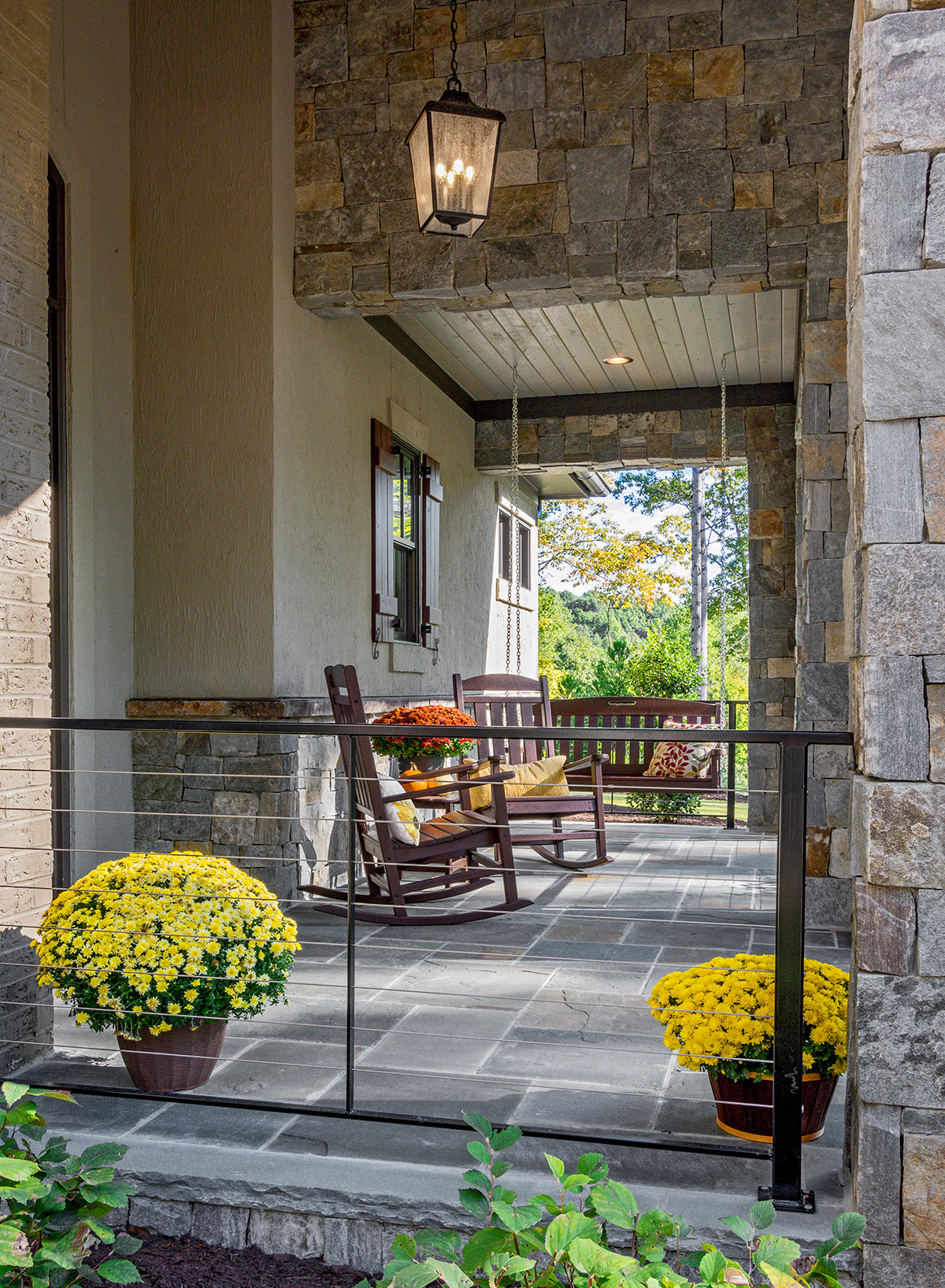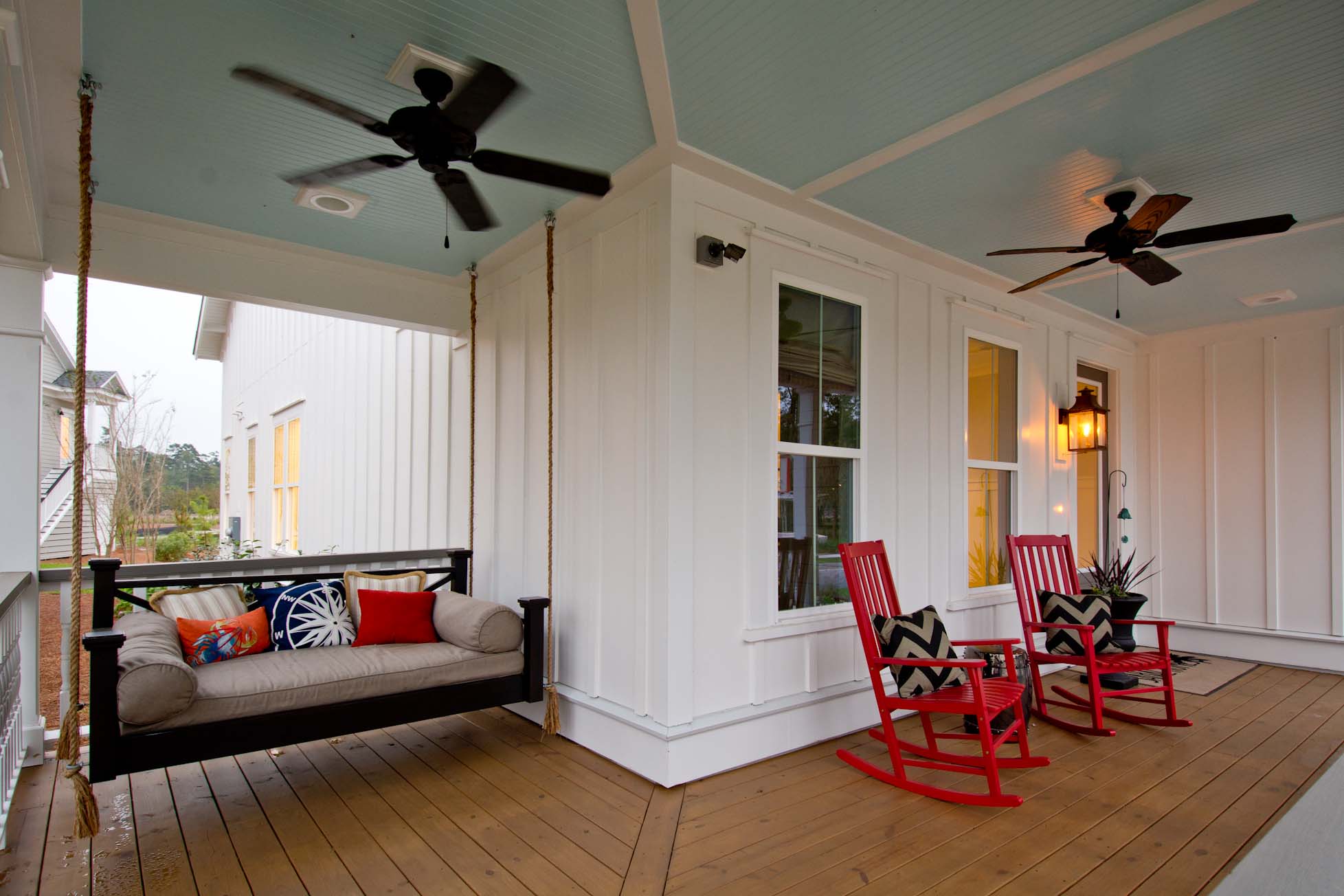Home buyers and city planners alike love front porches. What’s not to love? They make the front of our houses so much more friendly and welcoming. But porches can be expensive. In a robust market, buyers are happy to pay for the porch. But with interest rate concerns, I recommend builders offer homes with and without porches for better protection against a down market.
Let’s take a moment and examine all that goes into a great looking, usable front porch.
Pedestrian Friendly
Show a city planner a streetscape with front porches and their face will light up. Of course, they aren’t the ones who have to pay for them. Thankfully, many jurisdictions will allow the front setback to be shallower at the front porch. This affords builders and buyers better utilization of their lot. Even if it is not written into the zoning code, I’ve found some municipalities will grant the reduced setback at the porch. Sometimes, you just have to ask for it!
Depth and Width
Porches look great, but they have to be usable as well! The size of the porch should be proportional to the size of the house. I believe the minimum size of the porch should be 8’ wide by 6’ deep, which works fine on a 30’ wide house. This is just enough space for a couple of chairs. As the width of the house grows, so too should the width of the porch grow.
Depth can be tricky. Admittedly, 6’ can be tight if you want enough room to walk in front of the chairs (which, of course you do). Eight feet is better, but be careful in two story houses. If the porch is too deep, the porch roof might not allow egress windows above the porch. Factors that prohibit egress windows can range from the pitch of the porch roof, the depth of the floor system on the second level, and the head height of the second-floor windows.
Columns
The style of the porch column should match the style of the home (duh). This means, if you love Craftsman and the beefy columns that come with the style, your 6’ deep porch may end up less than 4’ at the column. If you have a 2’ deep column pier, I recommend placing the column so the front third extends past the front of the porch to lessen the pinch factor inside the porch.
The last detail regarding columns is to paint them the trim color, not the body color – I cannot count how many times I’ve seen a house make this mistake. This is where a color placement diagram comes in handy. Just because the column has stucco on it, doesn’t mean it should be painted the main body color (as seen below). You may also want to change the texture of your stucco columns to a smooth finish – so they look more like the wood.
Railings
If you can afford railings, I highly recommend them. As a front porch user, it gives a sense of enclosure along with providing a more defined space. There are variety of styles and materials to choose from. If railings are not in the budget, the right landscaping can offer a similar sense of enclosure.
Ceiling and Floor
Don’t forget these two critical surfaces. If your porch is slab on grade, chances are you will need to dress up the surface. Exposed slabs frequently crack and may show construction blemishes (scars, excess stucco, paint, etc.) A final coat of an elastomeric paint, cool deck topping, or porcelain tile can dress up this first impression space. Or skip the poured concrete and use concrete pavers. If you’re building off-grade front porches, you have an entirely different palette of flooring options. I personally like the synthetic wood products for porches, since I live in a damp climate.
For ceilings, you can’t beat the look of a bead board ceiling – especially painted “Haint” blue. This is the color they used in the low country of South Carolina to confuse insect into thinking it was sky or scaring evil spirits. For a budget friendly option, the vinyl siding folks now offer a variety of beadboard-looking ceiling finishes – even in blue.
Fabulous front porches make our streetscapes friendlier – even if they’re not often used. They also create that first impression for our buyers and our guests. Let’s make it a great one.
Categorized in: Exterior Styles, Outdoor Living
This post was written by Housing Design Matters


